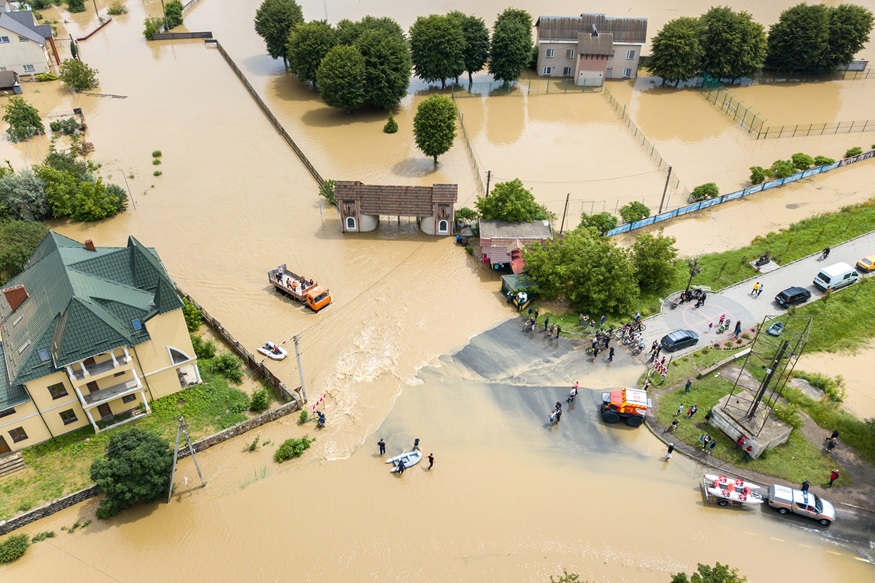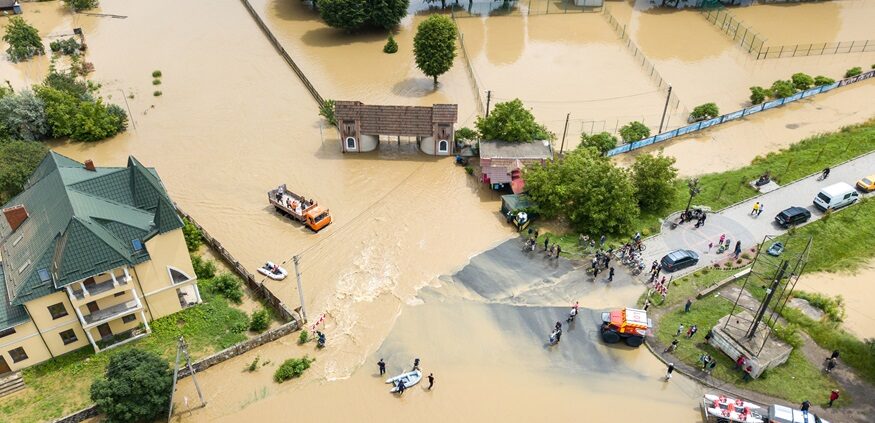Benefits of Biometrics After Natural Disasters

Hurricanes, typhoons, wildfires and earthquakes create devastating outcomes. Medical professionals are called to show up post-disaster to provide adequate medical care. When these events happen in succession, the influx of patients can overwhelm health care facilities and limit the number of people they can assist.
Biometric technology has become a powerful tool for recording a person’s unique physical characteristics and strengthening certain processes in health care. Its application after natural disasters can improve quality care and survivorship. Further developments may enhance disaster relief in the long run.
Biometric Benefits in Natural Disasters
Biometric’s strengths lie in tracking patients and handling medical records. These features offer a great deal in disaster relief efforts.
Medical Record Management
Medical records have always been challenging for health care facilities to deal with. An EHR system has thousands of transcripts from various people, each holding sensitive information. If many disaster victims flood the hospitals, manually going through the data would take too long. It would be devastating for those who need urgent care.
Biometric technology can simplify medical record management. Integrating unique patient data matches transcripts to the right person much faster. The process also eliminates errors in identification, which is critical in facing a higher patient load from natural disasters.
Patient Tracking
It’s challenging to keep track of patients as natural disasters occur. For instance, hurricane season is from June 1 to November 30, with peak activity between September and August. Communication becomes challenging when energy sources are impacted. Luckily, biometrics offers a chance to monitor people and their vitals.
Tracking is vital when looking up a patient’s location. Some natural disasters, like tornadoes, have the potential to displace people. If someone is injured and goes missing, they would be deprived of medical care. Biometric technology is a chance to find and help those who need aid.
Drug Administration
Medical professionals can utilize biometrics to improve drug administration. Medicine and supplies are vital for treating victims, but natural disasters can create a chaotic environment that makes tracking who needs what care challenging. Technology can ensure medication goes to the right person.
Biometrics are also an asset for securing and tracking inventory. Medication tends to run out fast when providing immediate care. Installing this technology on the units can notify management of shortages so they can replenish supplies and continue providing care. It also discourages intruders from meddling with it.
Current Implementation of Biometrics
Biometric technology provides excellent value in helping natural disaster victims. However, it can only do so when it’s implemented properly. Medical professionals can recommend people use wearable devices before natural disasters. They can monitor potential victims’ vitals, such as heart rate and blood pressure.
Smartphones are also ideal. They have biometric features such as fingerprint sensors, facial recognition and location tracking. This information can be uploaded to first-responder programs, alerting professionals if anyone needs assistance.
Cellphones can also be used for emergency reporting and management. Mobile devices can send an accurate geolocation, which calls on medical professionals when needed. Potential victims would also get alerts, which can signal them to evacuate.
Future Developments for Disaster Relief Care
Biometric technology is constantly developing, which can help upgrade disaster relief care. The main target is to eventually create a nationwide biometric identification system. Having this information can mean providing immediate aid as natural disasters strike to minimize casualties.
Biometrics should eventually become more inclusive. These systems are based on existing datasets, but biomarkers in the program provide more accuracy in identifying and tracking middle-aged white men. Every person deserves health care, so engineering biometrics with AI should be explored further to eliminate such problems.
Considerations to Keep in Mind
Medical technology professionals should consider optimizing biometric technology further to improve care in natural disasters. For example, data security is quite a sensitive topic. Health care workers should always prioritize patient privacy, but natural disasters can create a sense of urgency that may eliminate those boundaries.
Another consideration is optimizing biometric technology for extreme events. In a life-or-death situation, carrying around large devices solely for geolocation purposes can be hard. Portability and long battery life are critical to survival.
Plus, tracking patients or monitoring medical records would be challenging if the devices malfunction after getting wet. Inaccurate data can result in wrong decisions and limited care. It’s important to employ features such as water and shock resistance.
Care for Disaster Victims
Natural disasters can harm vulnerable residents. Medical technology professionals must anticipate peak seasons and stay on high alert to save as many people as possible. Utilizing biometrics to enhance relief efforts and tend to people who need help is vital.





Leave a Reply
Want to join the discussion?Feel free to contribute!